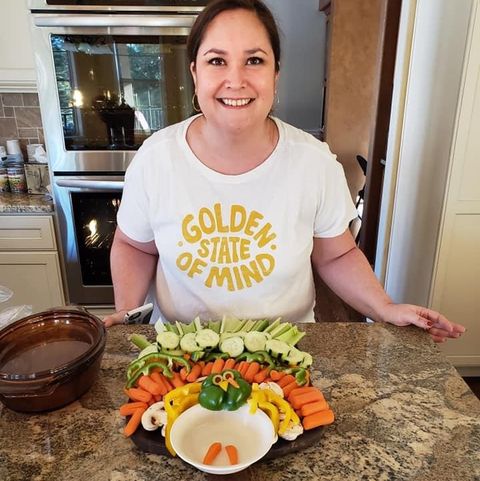White Family Lineage is Easy to Find
Last year, I found myself sitting in our living room trying to explain to my boys what happened to George Floyd. I broke down the Black Lives Matter movement into digestible pieces that their 7-year-old and 12-year-old brains could absorb.
I wanted them to know why people were taking to the streets marching and protesting. And just a few weeks ago, I had to explain what the symbol of the Confederate flag meant and how it made people of color feel as we watched an angry mob of hundreds descend upon the nation's Capitol. And while I looked into their eyes, which seemed to be filled with confusion, I realized I had been here before.
Way back in 1994, my mom attempted to explain to my brothers and me — we're Mexican and Native American — about Rodney King and why people were rioting in the streets, breaking into stores and setting fires to some of our favorite places.
More From Good Housekeeping

I'm sure she saw the same confusion in our eyes as she tried to explain racial injustice in kid-sized words and phrases. But there was one part of that conversation that I did not have to repeat to my own children: My mom included a version of "the talk," which was specifically directed at my brothers, whose skin is darker than mine. She did what so many other parents of color must do with their children — tell them how to dress and how to act when they leave the house so they aren't assumed to be gang members, criminals or generally up to no good — lest they leave themselves open to being another Floyd or Jacob Blake. And, even then, it might not be enough.
People have mistreated my brothers all their lives because of their skin tones. They've had experiences that I've never had because I look white — even though I'm a person of color, my light skin and hair gives me "white" privilege that they might never see. And now that I'm a mom of two boys who are also of mixed descent and share similar features to me, I feel a tremendous amount of guilt.
For as long as I can remember, I've always asked myself, "Am I really a person of color if I'm not perceived as one and never went through any of the struggles that many in my family have? Are my children truly minorities if all this is true?" This is exactly what I have been feeling guilty about for so long.
I remember stories about my grandfather being pulled over by the cops during the Watts Uprisings simply because he was Mexican. I want my kids to know that this is in their history, that it happened to our family and that it still happens today. All you have to do is read the news.
It turns out that my feelings of guilt are not misplaced and are actually quite common amongst multi-racial adults and their children, according to Farzana Nayani, author of the book Raising Multiracial Children: Tools for Nurturing Identity in a Racialized World .
"Light-skinned people of color are likely being perceived as white, even without trying to, in one way or another," she says. "This can reinforce them feeling excluded as a person of color, creating imposter syndrome or guilt and shame about their identity." And there it is — imposter syndrome, the feeling of pretending to be someone that you aren't. I felt like this in grade school when girls said that I wasn't Mexican enough because I didn't speak Spanish and my skin wasn't a dark enough brown. Maybe my sons feel this, too, when they say they are Mexican and people question if they are telling the truth.
It's easy to get mixed up in percentages and fractions when talking about race and ethnicity. If I put pen to paper about my kids' racial background it would be a confusing mix of numbers. Maybe it's time to drop the fractions when talking about myself, as Nayani suggests because, "It can lead multiracial children and adults to feel 'not quite enough' because they are not 'full' anything.
I'm not one-half Mexican and one-half Native American. I'm Mexican and Native American. This gives both cultures an equal amount of importance. I'm doing the same thing for my kids because I want them to honor their beautiful heritage by proudly saying they are of Mexican, Native American, French Canadian and Italian descent.
The best thing I can do is continue to speak openly about our family's culture, history and lineage. But most importantly, I can teach my children to be allies to others by speaking out against bias and racism. Diversity is what makes things interesting. It's what makes America, America. I'm proud of my family and where they came from, but it's up to me to shape the way my children see themselves in today's world, where racial equality remains unfinished. I hope they have a part in making some really big changes.
Christina Montoya Fiedler is a news writer based in Los Angeles, CA; she's a mom, wife, blogger, former publicist, lima bean hater and coffee drinker extraordinaire — but not necessarily in that order. You can follow her on Twitter @cmf2009.
casimatyimper1993.blogspot.com
Source: https://www.goodhousekeeping.com/life/parenting/a34096935/multiracial-family-assumed-to-be-white/


0 Response to "White Family Lineage is Easy to Find"
Post a Comment